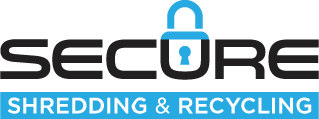Understanding the Various Methods of Hard Drive Destruction
Businesses store a vast amount of sensitive data on hard drives. But when it comes to disposing of these devices, they must be thoroughly destroyed to protect against data breaches and identity theft. However, not all destruction methods can ensure the lasting protection of your confidential data. Start by exploring four methods of hard drive destruction and learn how Secure Shredding & Recycling can help protect your sensitive information in Tampa, FL.

Why Your Method of Destruction Matters
Whether you store patient health information or sensitive tax files on your hard drive, you don’t want this private information to fall into the wrong hands. Unfortunately, simply deleting files is not enough to ensure your data is completely erased. Even after these actions, it is still possible for someone to retrieve the data with specialized software or hardware. Hard drive destruction provides a more secure method of protecting data privacy, ensuring that the data cannot be accessed.
Your method of hard drive destruction matters. The method can ensure that the data stored on the hard drive cannot be retrieved by anyone, even those with advanced data recovery techniques. This decision is especially important for businesses and organizations that handle sensitive or confidential data. Learn more about these four common hard drive destruction methods to help you determine the best way to protect your sensitive information in Tampa, FL.
1. Reformatting
Reformatting a hard drive involves deleting its data and setting up a new file system. You must first erase the drive’s existing operating and file systems. Then, if you want your hard drive to remain functional, you must create and format a new file system. While reformatting a hard drive may make the existing data inaccessible to most users, it is not a guaranteed method of hard drive destruction.
Keep in mind that reformatting does not permanently erase the data on the hard drive. Instead, it marks the areas of the drive where the data is stored as available for new data to be written. In other words, the data remains on the hard drive until it is overwritten. Therefore, unauthorized users may still be able to recover the data from a reformatted hard drive, especially if the drive has not yet been overwritten with new data.
2. Degaussing
Degaussing is a method of scrambling the information stored on the hard drive using a strong magnetic force. This exposure alters the magnetic patterns of the data. While degaussing is an effective method for making data unrecognizable, physical hard drive destruction from a professional is the only way to be sure your information can’t be recovered.
In addition, some types of hard drives cannot be effectively degaussed. These types include solid-state drives, thumb drives, and SD cards containing both solid-state and magnetic storage elements. These drives use different technologies to store data that are not vulnerable to magnetic erasure.
3. Wiping
Wiping a hard drive erases all data from the drive, essentially resetting it to its original state as if it were new. The process of wiping a hard drive involves overwriting all the data on the drive with random data patterns, ensuring the original data cannot be recovered. Wiping differs from reformatting, which prepares a hard drive for use by creating a new file system. Reformatting does not erase the information on the drive, meaning the data may still be recoverable through various means.
While wiping a hard drive can be effective, there are still some methods that data recovery experts can use to recover information from a wiped hard drive. In addition, wiping a hard drive may not be sufficient for situations where data security and privacy are necessary, such as in cases involving sensitive personal information, financial records, or confidential business information.
4. Solid-State Shredding – The Most Secure Method
Solid-state shredding is widely recognized as the most reliable and secure method of hard drive destruction. This shredding process involves physically breaking the hard drive into small pieces, making it impossible to retrieve any data. While other methods of hard drive destruction may make it more difficult to recover data, shredding is the only process that ensures complete destruction and security.
At Secure Shredding & Recycling, we use state-of-the-art industrial equipment to thoroughly shred your hard drive in our secure facility. Once we have destroyed your hard drive ensuring the safety of your information, we dispose of the remaining pieces in environmentally responsible ways through e-waste recycling. After completing your shredding service, we will present you with a Certificate of Destruction for your records.
Choose Trustworthy Hard Drive Destruction in Tampa, FL
Don’t let your data fall into the wrong hands. Secure Shredding & Recycling knows the best practices for safe data disposal. For hard drive destruction services in Tampa, FL, contact us at 1-833-747-3399 or message us online with any questions. Protect your sensitive information from unauthorized access while staying compliant with data privacy laws. With years of experience in data destruction, you can trust our professionals to dispose of your electronic media properly. Get in touch with us today to learn how we can put your business a step ahead of modern security risks.


